
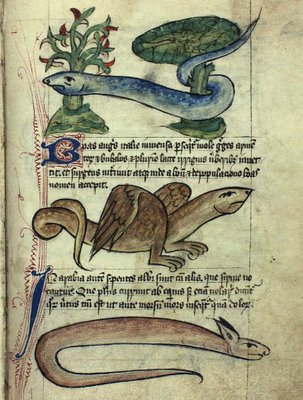
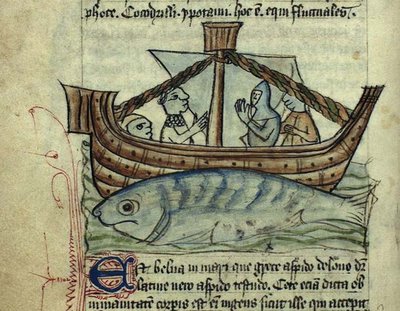
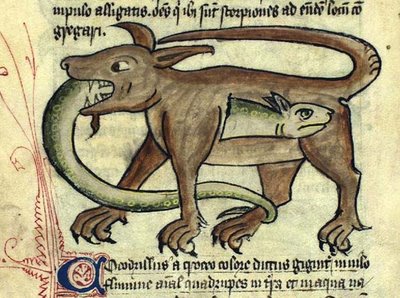

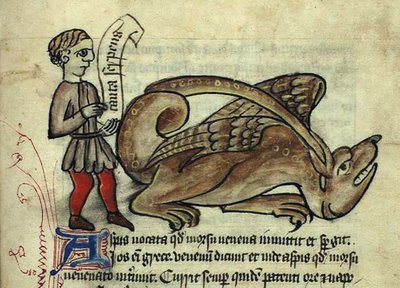
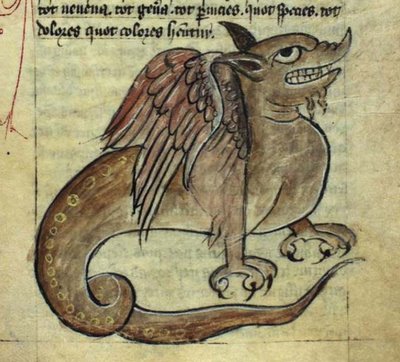

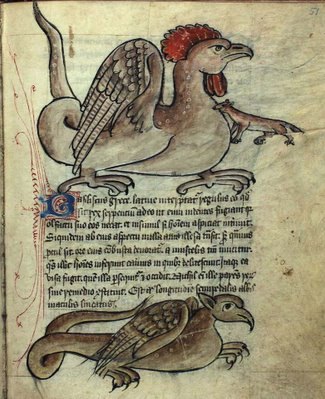
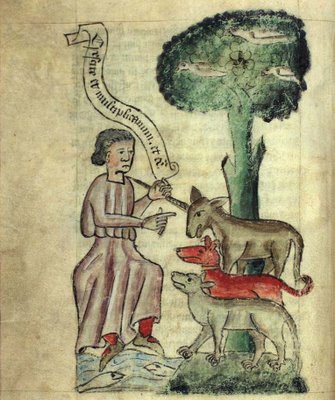
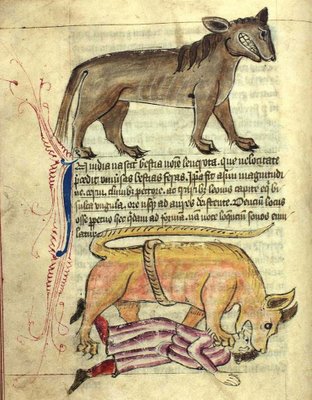
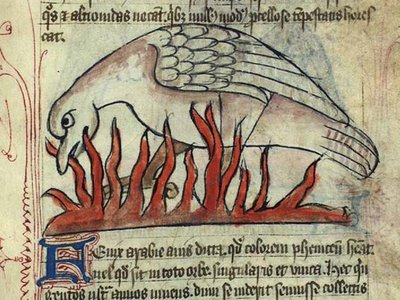

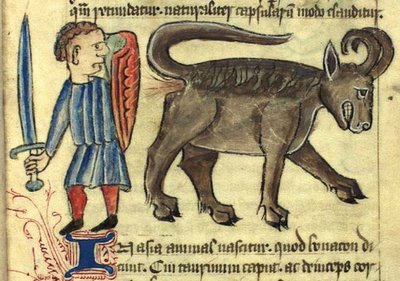
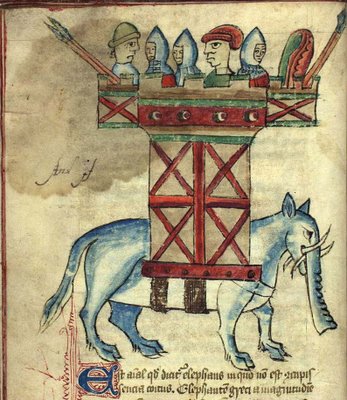

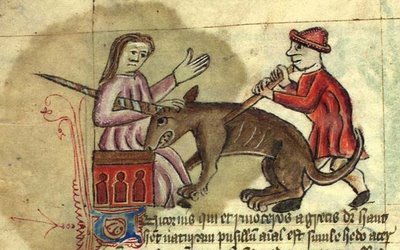
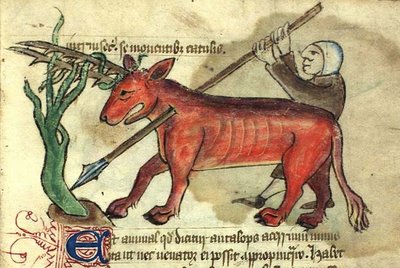
Bestiaries are part of a tradition that began in the 3rd or 4th centuries AD with the greek 'Physiologus', a collection of animal-based moral stories, widely circulated in Europe. Later, the illustrated texts were expanded and came to include not only the religious/moral elements, but also commentary drawn from other 'more scientific' sources such as Pliny the Elder and Aristotles. The artists were often copying from predecessors and were unlikely to have been familiar with many of the animals, accounting for the odd appearance at times. Fabulous animals such as mermaids, unicorns, griffins and dragons were usually included. These works from the 13th to 15th centuries were obviously the forerunners to the natural history books from the renaissance period and beyond.
The images above come from a parchment manuscript identified as 'GKS 1633 4º: Bestiarius' in the Danish Royal Library in Copenhagen. There are 117 illustrations in the 154 page book.
This is an english bestiary in a 'bastard anglicana' latin script from the beginning of the 15th century. It is otherwise known as The Bestiary of Anne Walshe because her name appears in crude practice writing in some of the margins; she was no doubt a young girl in England when she was given free reign over this book early in its life.
It is by no means a luxury production - the images are uncomplicated, no gold leaf was used and much of the pigment is in dull colour washes - but the artist shows a sense of humour and the illustrations mostly retain their original bright visual characteristics.
The Bestiary of Anne Walshe was the subject of a student paper by David Badke at the University of Victoria in Canada in 2001 which is available at The Medieval Bestiary site. The paper is well worth reading. It's not too complicated and it's interesting to read about the systematic way in which a medieval text is evaluated.
the animal-related manuscript posts are always my favorites. thanks for putting these up, pk!
ReplyDeletecheers,
kate